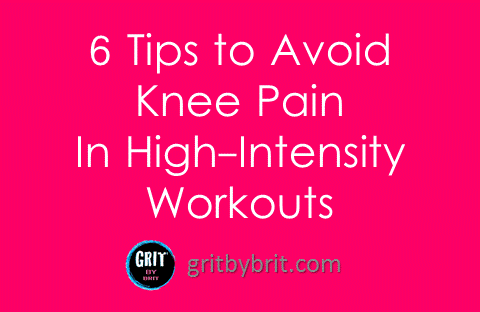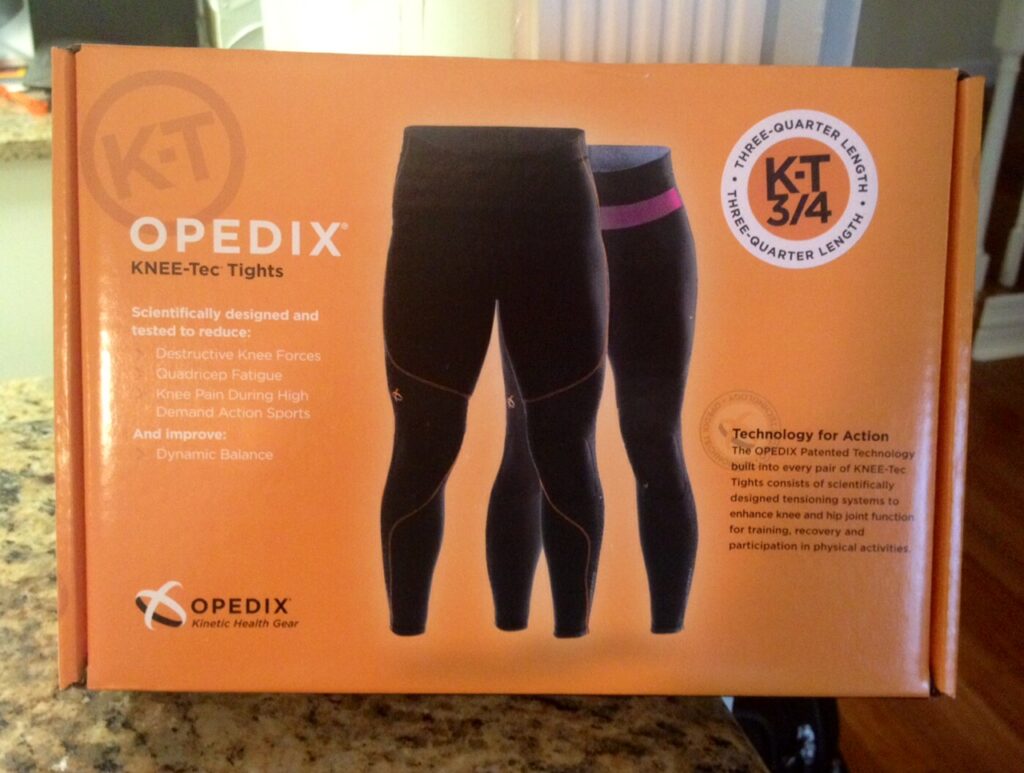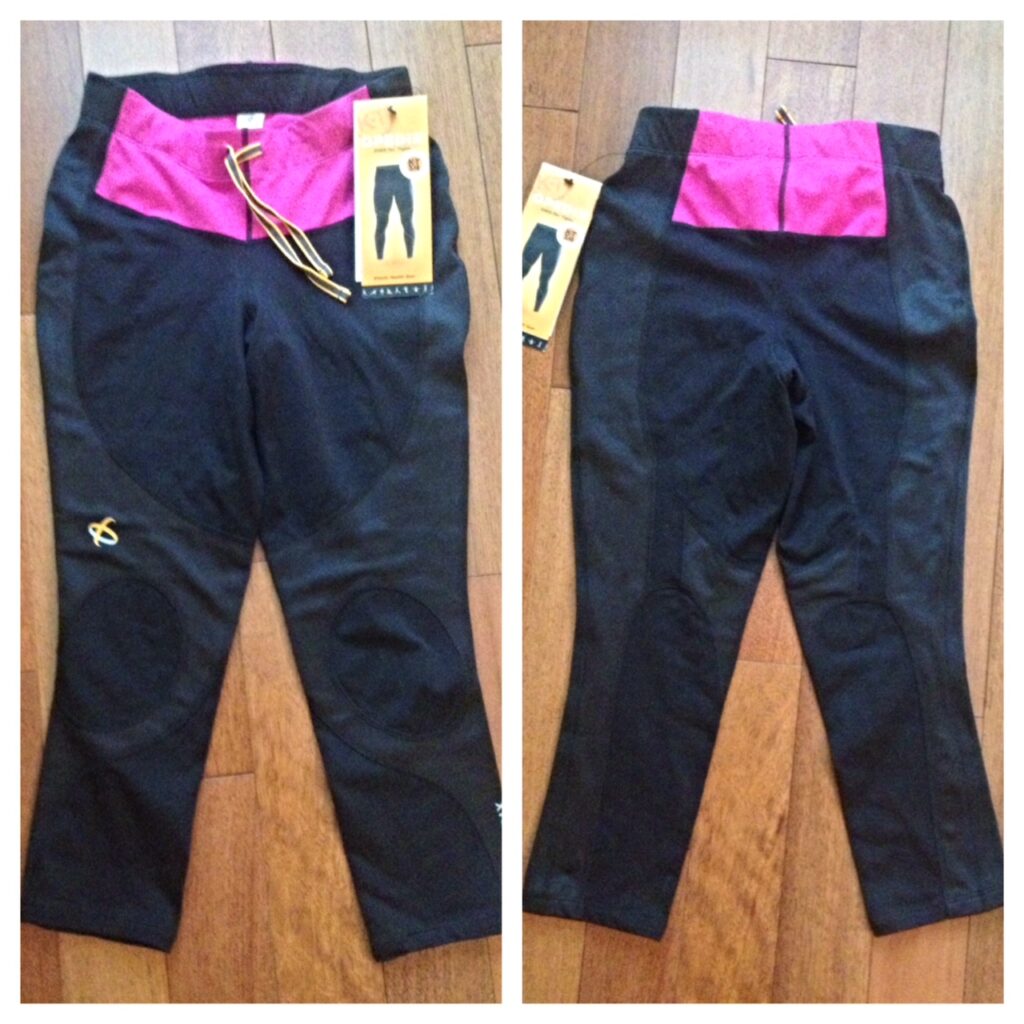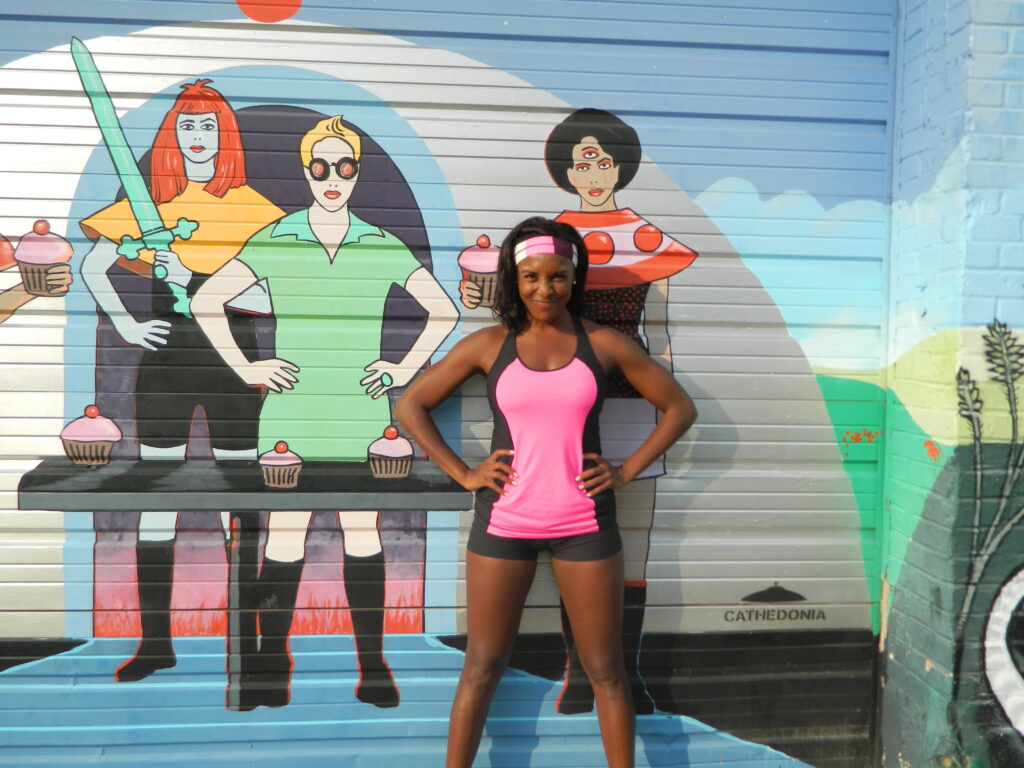Hello friends! Hope your week is going well. Do any of you struggle with knee pain during or after workouts? I definitely do. Last year I wrote a blog post titled, “No More Knee Pain” that provides information about the knee anatomy and knee injury prevention. Today I want to talk about minimizing knee pain while partaking high intensity and even high impact exercises. If you’re like me, you hate having to sit on the sidelines while others are having a blast and getting a killer workout. Despite tearing my ACL and having reconstructive surgery, I’ve found ways to maintain my participation in high impact exercise. Essentially, I abide by these key rules…
- Wear Supportive Shoes. I know that minimalist sneakers are really in style (i.e. Nike Frees, which I LOVE). However you should make sure that your shoes provide enough cushion to support your fit in high impact exercise. That means your shoes should enable a soft landing when you jump and provide solid support when you run.
- Stay light on your toes. This is especially important when jumping. Be sure to land on the balls of your feels to minimize the impact of landing. Also, avoid landing on your heels and NEVER lock out your knees.
- Engage your quads and hamstrings. In plyometric workouts it’s critical that you use your legs muscles to drive the movement. Proactively tighten your thigh muscles (quads and hamstrings) before you execute an explosive motion. These muscles provide critical knee support. When properly engaged, they minimize strain on your patella tendon and IT bands.
- Keep your knees pointing in the same direction as your toes. When your knees and toes are misaligned you put yourself at high risk of twisting your knee and getting injured. An easy way to ensure your leg is properly aligned is to keep you knees pointing in the same direction as your toes (espcially when squatting).
- When Squatting, never let your knees go beyond your toes. Related to tip #5, it’s equally important to avoid leaning forward or squatting too deep to the point that your knees go past your toes. In my classes, I always say “make sure you can see you toes.” If you’re doing a squat and you can’t see your toes, you need to sit back more or maybe not squat so low.
- Compress. Wearing a compression sleeve or a knee brace can help increase blood flow. Adequate blood flow is important for muscle repair and recovery. Also, the compression provides added support to your joint during exercise.
On this last point, a few weeks ago I was approached by Opedix to write a review on their new compression tights. These tights incorporate a patented knee support and have “scientifically designed ‘tensioning’ systems in the base layer to enhance the kinetic functioning of your body.” Unlike traditional compression, they also help keep your joints aligned through “Torque Reform Technology.” Given my history with knee injuries I accepted the request.
First, off the tights came to me in this really fancy box. I was like, “Whoa – this is serious business” …
After I opened the box and pulled out that tights, I could definitely see that they had built in compression. In fact, I thought they looked kinda funky. Y’all know I’m keen on stylsih, cute activewear – style and functionality are equally important to me. Fortunately when I tried on the tights, they didn’t look too bad. Not amazing, but not terrible. They fit low on my waist and snug throughout my leg. I could really feel the added support around the knee joint. On the down side, the compression squeezes right above my knee and makes me look like have an extra fat pudge on my inner thighs.
I went ahead and wore them to my kickboxing class that day. (You can check out my post-workout pic on Instagram) During the workout my legs felt strong, stable and supported. The tights didn’t slip down on my waist nor rub on my leg to cause discomfort. Better yet, I had a pink headband that matched the waistband on my tights so I was lookin’ good 🙂 After the workout, surprisingly, my knees were not as sore as they usually are – very nice. Final verdict – BUY. These are a legit product especially if you’ve been battling knee injuries and are looking for a new pain-relieving solution. However, keep in mind that knee pain, in most cases, is chronic. So it’s hard to eliminate altogether. Hopefully applying my tips minimize your knee pain and keep you in the game for more running, burpees and squat jumps! 😉 Lots of luv, Brit
Which exercises cause you the most knee pain?
How do you protect your knees from injury?






